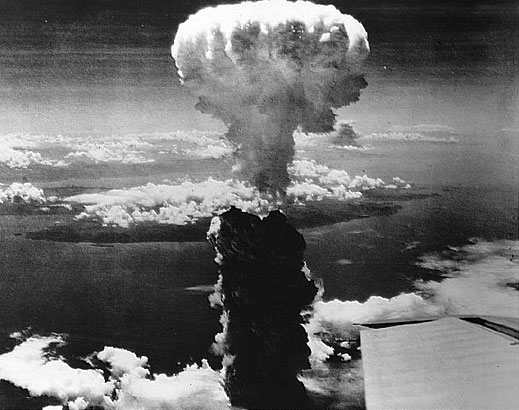One of the most lamentable acts in the human history was this atomic
attack on Hiroshima and Nagasaki. No matter what happens humans should
not be subject to such a devastating attack. This incident not only
claimed thousands of lives but also affected the coming generations and I
think nothing could be worse than this. I am sure that you all must be
have something in your minds about this attack but I will divulge some
facts about this incident which you might not know and help you increase
your knowledge about this historical massacre.

It was Hiroshima which came first on the target and marked a history of
deadly massacre when On August 6, 1945, the United States used a
massive, atomic weapon against Hiroshima, Japan and this atomic bomb was
equivalent of 20,000 tons of TNT.

Just after a lapse of 3 days on August 9, 1945, another B-29 left
Tinian at 3:49am. “Fat man”, the nickname used for the atomic bomb, was
dropped on Nagasaki at 11:02am and it exploded 1650 feet above the city.

Here are some of the facts about the atomic bomb which was dropped on
the two cities: Length 3 meters, Diameter 0.7 meters, Weight 4 tons,
Element Uranium 235, Energy equivalent to 20 kilotons of TNT explosive
power.

The death swelled up to about 140,000+/- 10,000, in which around 20,000
were soldiers, by the end of December 1945. This thing will come to you
as a shock that 90% of these are thought to have been killed within 2
weeks after the bombing.

Let’s talk about the buildings which were there at the time of atomic
attack. What do you think the atomic bomb had possibly done to the
building and to which extent?. There were 76,000 buildings in the city
at the time and only 8% remained intact after the bomb explosion. The
rest 92% of them were destroyed by blast and fire. The bomb affected an
area of around 13 square kilometers and turned that into ruins.

The radiation emitted in the air within one minute of the blast
composed of gamma rays and neutrons. According to studies, if the whole
body of a person is exposed to radiation of 700 rad or more than there
is very less chance of escaping death. Now, if we refer to Hiroshima and
Nagasaki and apply this rule there then we will come to know that
location that was exposed to the lethal dose of 700 rad was a point
approximately 925 meters away from the hypocentre (in Hiroshima); and in
the case of the semi lethal dose of 400 rad, ap¬proximately 1,025
meters.

”Enola
Gay” was the name given to the B-29 by the pilot and the nick name of
the atomic bomb which was to be dropped later on was “Little Boy”. This
so called “Little Boy” was a result of a 2 billion dollar research
project.

A survivor of this catastrophic event can tell the best explanation of
the actual scene of Hiroshima after the bomb exploded so I would like to
quote his words here without amending it.
“The appearance of people was . . . well, they all had skin blackened by
burns. . . . They had no hair because their hair was burned, and at a
glance you couldn’t tell whether you were looking at them from in front
or in back. . . . They held their arms bent [forward] like this . . .
and their skin – not only on their hands, but on their faces and bodies
too – hung down. . . . If there had been only one or two such people . .
. perhaps I would not have had such a strong impression. But wherever I
walked I met these people. . . . Many of them died along the road – I
can still picture them in my mind — like walking ghosts.”

Did you know about nijū hibakusha?. This is the name given to those
people who survived both the atomic bombs. Tsutomu Yamaguchi was the
first officially recognized nijū hibakusha and he died on January 4,
2010, after a battle with stomach cancer at the age of 93.

I would like you to listen to a 4-year old survivor of the atomic bombs
as he expresses his emotions in a very despondent manner. Despite of
the fact that he survived, he was not happy at all because he did not
have his mother by his side.
“I saw the atom bomb. I was four then. I remember the cicadas chirping.
The atom bomb was the last thing that happened in the war and no more
bad things have happened since then, but I don’t have my Mummy any more.
So even if it isn’t bad any more, I’m not happy.”
— Kayano Nagai, survivor

No comments:
Post a Comment